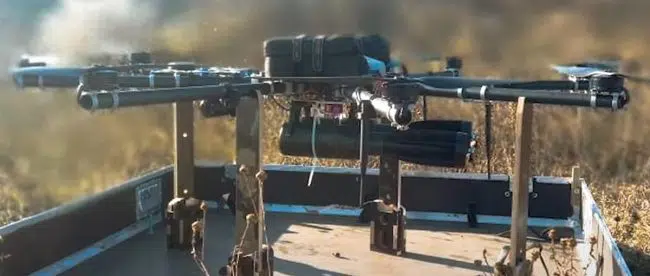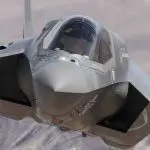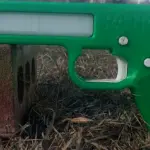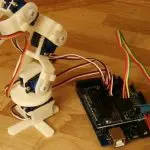3D Printed Weapons Go To War
Like most other people I’ve been keeping an eye on what’s happening in Ukraine, and it’s been interesting. The war isn’t turning out the way it should have on paper; Russia has a lot more military equipment than Ukraine does, and overall it’s more modern. Sheer weight of numbers should have led to a rapid and convincing Russian victory. That isn’t how it’s working out, though, and one reason for that is the extreme ingenuity Ukraine is displaying. And yes, this is relevant to 3D printing.
Anyway, at various points in my life I’ve had the dubious privilege of handling, inspecting and occasionally hiding from a wide variety of Soviet and Russian weapons. Some of these, their army’s performance in Ukraine notwithstanding, are actually rather good. Others are, bluntly, old junk. One of the worst examples of old junk I’ve seen was a crate of RKG-3 hand grenades in an Iraqi police station.
The RKG-3 was developed in the late 1940s, to replace a variety of older versions, and issued to Soviet infantrymen until 1973. It’s an anti-tank weapon; the idea is that you pull the pin, let the lever fly off and lob the grenade towards the nearest unfriendly tank. A small parachute pops out of the grenade’s handle, bringing it down vertically, and when it hits the tank a shaped charge warhead explodes, burning a neat hole in the thin top armour and doing Nasty Things to the occupants.
Now, the warhead part is fine; it can penetrate up to 220mm of armour, which will easily get through the top of a tank. The problem is there’s a limit to how far you can accurately throw a 1kg grenade, especially when there’s a parachute hanging out the back of it. You need to get quite close – inside 25m, and ideally much closer than that – and while that might have worked fine in the rubble of Stalingrad modern tanks have thermal imagers, all-round video cameras and a big remote-controlled machinegun on top. Your chances of getting close to one without being detected and shot repeatedly are, to say the least, not great.
Upgrades With 3D Printing
From Ukraine’s point of view this must have been a bit disappointing, because they have both large stocks of old ex-Soviet RKG-3s and a lot of Russian tanks they’d rather like to destroy. The problem is that trying to get the grenades onto the tanks is basically just a dramatic way to commit suicide. Or at least it was, because Ukrainian manufacturing company PJSC Mayak has done something clever.
Working with Ukrainian military drone operators, PJSC Mayak designed a 3D-printable conversion kit for the RKG-3 grenade. The conversion basically involves removing the grenade’s handle and parachute, then replacing them with a 3D-printed tailcone and stabilising fins. This converts the grenade into something that looks like a tiny bomb. In fact it is a tiny bomb.
I mentioned drone operators. The Ukrainians have been using a variety of commercial drones for surveillance and reconnaissance. They’ve now started hanging the converted grenades, renamed the RKG 1600, from those drones. Armed military drones are extremely expensive; the MQ-9 Predator can carry a ton of weaponry, but costs around £4 million. An off the shelf octocopter capable of lifting 2.5kg, however, costs less than £2,000 – and it can carry a pair of RKG 1600 mini-bombs. And while the RKG-3 was so inaccurate that you had to get suicidally close to a tank to have any chance of hitting it, the 3D-printed tail fins on the RKG 1600 are a game changer. Drones can reliably drop them into a one-metre circle from 300m up – and if you can do that, hitting a tank is easy.
I assume most of our readers don’t have a supply of ancient Soviet anti-tank grenades (if you do, move well clear and call bomb disposal), but the RKG 1600 is a great example of how 3D printing can give things a new lease of life. It’s also a great example of how flexible and responsive this new form of manufacturing can be. Ukraine didn’t need to build a new factory to make RKG 1600s; all they have to do is distribute the print files to any company or volunteer with a 3D printer, because the conversion kit could easily be printed on an Ender 3. Have you repurposed or modernised something using 3D-printed parts? Let us know in the comments!










Leave a comment
You must be logged in to post a comment.